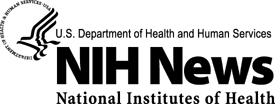 |
|
|
FOR IMMEDIATE RELEASE:
December 17, 1999 #99-09 NIEHS CONTACT:
Bill Grigg (301) 402-3378 17 Dec 1999: Cancer Review Set for Nine Substances, Three Used to Make Materials Less FlammableThe National Toxicology Program (http://ntp.niehs.nih.gov/) Board of Scientific Counselors subcommittee on the Report on Carcinogens will meet Jan. 20 and 21 in Arlington, Va. (http://ntp.niehs.nih.gov/go/10508), for a public scientific review of nine substances -- including three used to make products less flammable -- for possible listing in the tenth edition of the federal report. After the committee votes at this meeting, there will be an additional public comment period and an NTP Executive Committee review before recommendations are made to the Department of Health and Human Services (http://www.hhs.gov/)
The National Toxicology Program is headquartered at the National Institute of Environmental Health Sciences (http://www.niehs.nih.gov/) in Research Triangle Park, N.C., and most scientific counselors' meetings have been held there. The current review will be in the Washington area because both industry and consumer groups recommended that the location would be more convenient and be better attended. The review will be at the Crystal City Marriott (http://www.marriott.com/hotels/travel/wascc-crystal-city-marriott-at-reagan-national-airport/) George Lucier, director of the Environmental Toxicology Program at NIEHS, said, "We hope this location will encourage more public participation in this important process in which substances are determined by the Department of Health and Human Services to be 'anticipated' or 'known' human carcinogens." The determinations, made in a report sent to Congress by the Secretary of Health and Human Services, helps the public, Congress and regulatory agencies determine if the public is adequately protected from unnecessary exposure to carcinogens. Before the meeting, the board subcommittee -- which is made up of non-government scientists -- receives background documents on studies of the substances and the results of two earlier scientific reviews, one by scientists of the National Institute of Environmental Health Sciences and the other by scientists from a group of federal agencies. Anyone wishing to obtain the background documents on any of the substances should contact William Jameson, Ph.D., at (919) 541-4096, or write him at NIEHS mail drop EC-14, PO Box 12233, Research Triangle Park, NC 27709. People who want to make oral, public comments to the review subcommittee should contact Mary S. Wolfe, Ph.D., NIEHS mail drop A3-07, PO Box 12233, Research Triangle Park, NC 27709, or call her at (919)541-3971. Publication of the tenth Report on Carcinogens is planned for 2002. A second group of chemicals that may be listed in the report will be publicly reviewed later in 2000. The report has no direct regulatory authority but it alerts Congress, state and federal agencies, businesses, unions and other citizens to review their uses, precautions and regulations. |
|


